

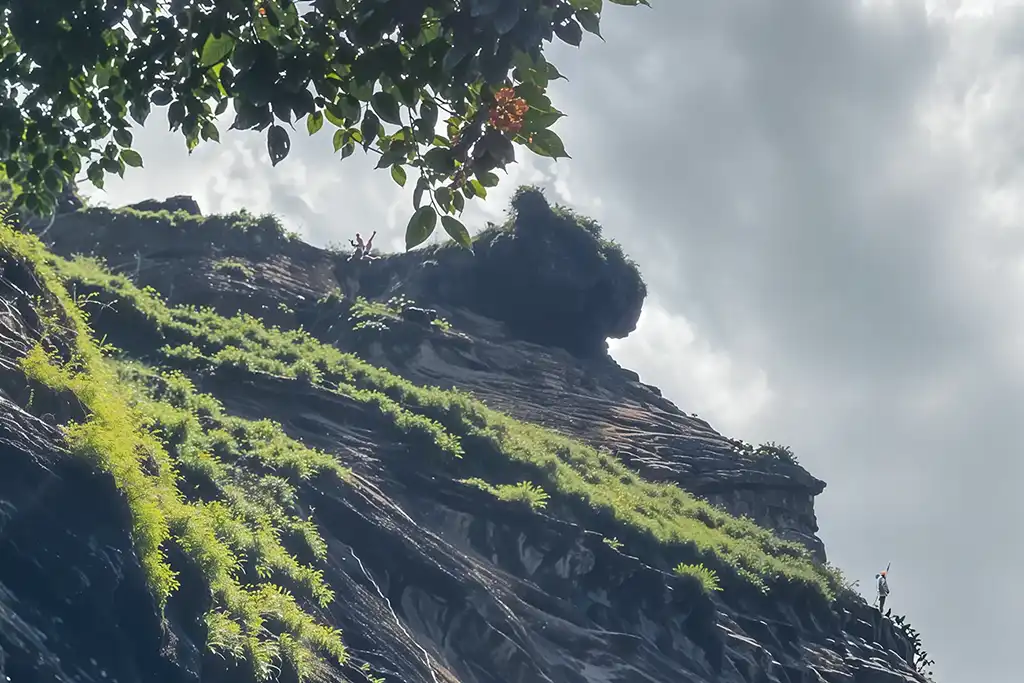
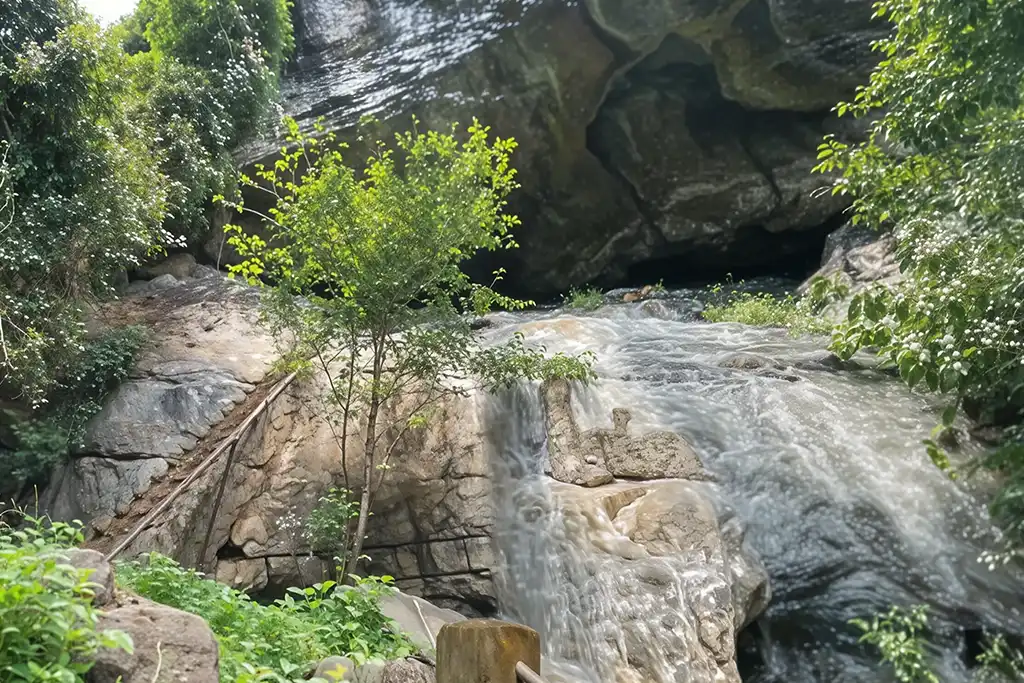
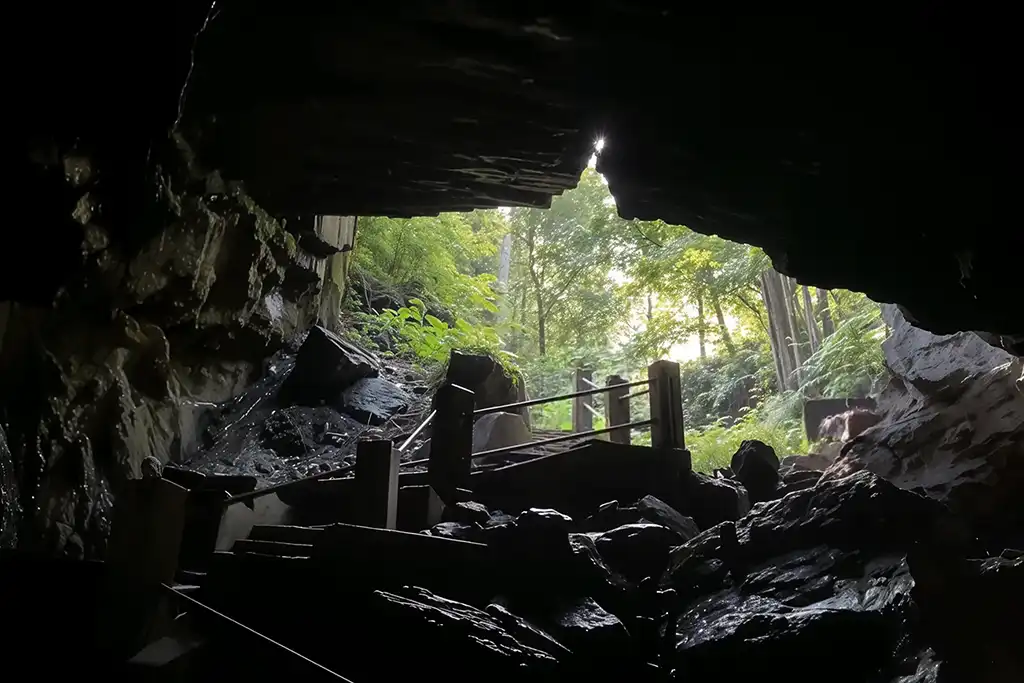
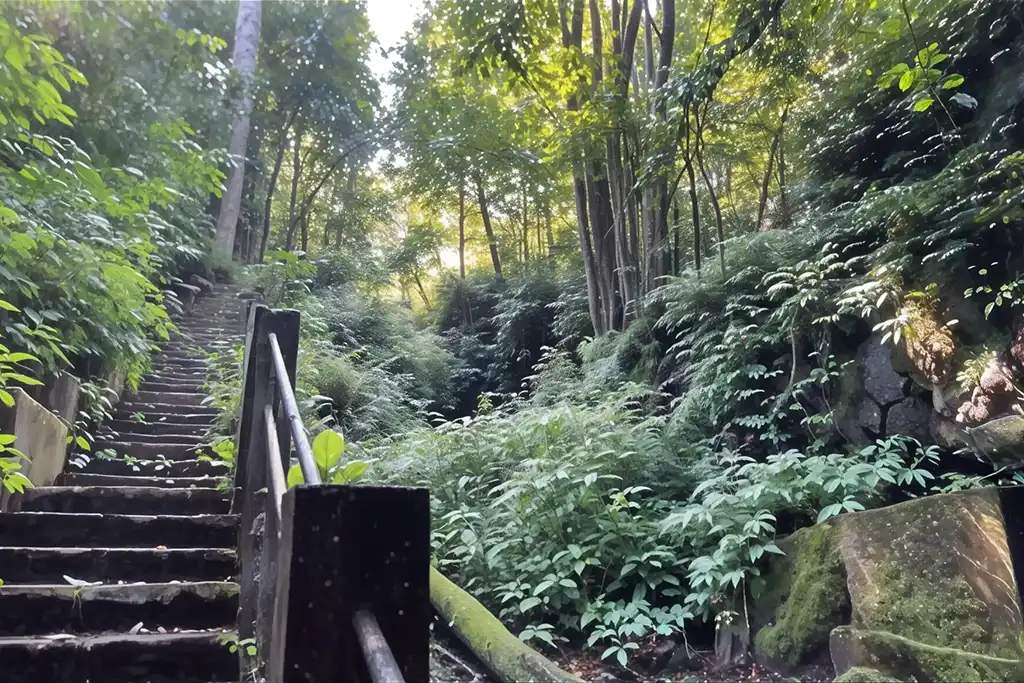
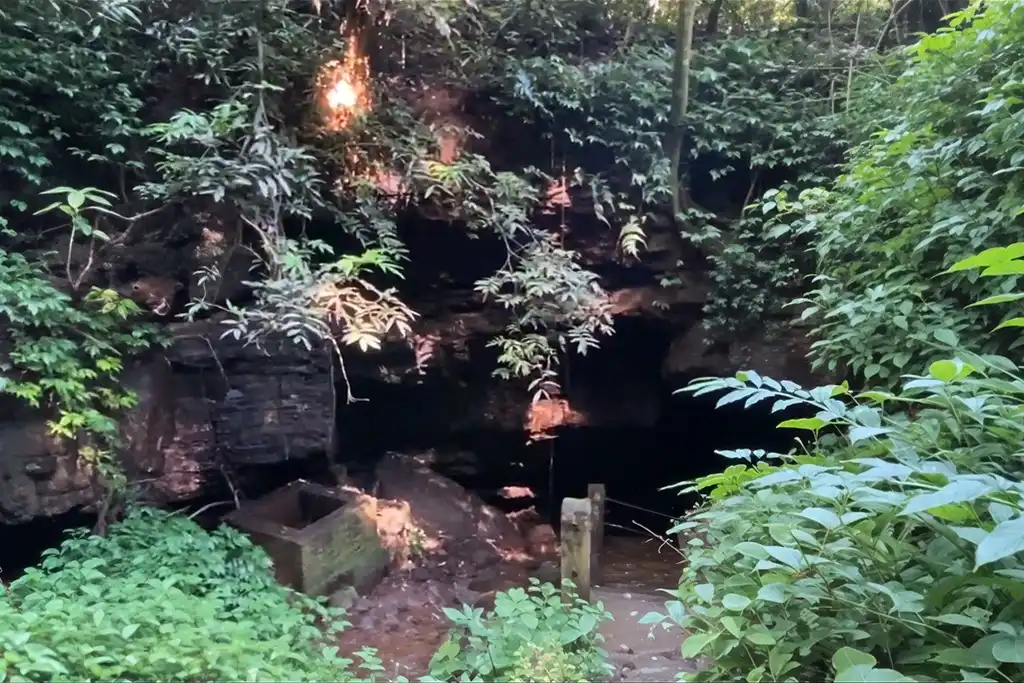
Kavala Caves
Deep Inside the Earth: What Makes Kavala Caves Special
Tucked away in the dense forests of Dandeli, Karnataka, the Kavala Caves are not just ancient limestone formations — they’re a walk through geological time and local legend. These caves were formed by volcanic activity and later shaped by water and wind, leaving behind stunning stalactites and stalagmites.
The biggest draw inside? A naturally formed Shiva Lingam, nestled deep within the cave’s womb. Pilgrims, nature lovers, and trekkers come here for different reasons — but all leave with the same awe.
Inside, the smell of damp earth mixes with the flutter of bats overhead. If you’re lucky (or brave), you might also spot harmless cave snakes curled in the corners.
What It Takes to Get There
Getting to Kavala Caves is part of the adventure. From Dandeli town, it’s about a 25-km drive. You can take a private car or hire a jeep through the Forest Department. Remember: you need a permit — available from the Phansoli Village Range Office — to enter the area.
Once you’re there, the real journey begins. 375 steps lead down into the belly of the forest, followed by narrow passages that require actual crawling. It’s not for the claustrophobic — or the faint-hearted.
Planning Your Visit: What You Need to Know
Best Time to Visit: October to February, when the weather is pleasant and the caves are safer to explore.
Timings: Typically open from 6:00 AM to 6:00 PM (confirm locally before visiting).
Entry & Charges:
- Entry Fee: ₹20–₹30 (approx.)
- Trekking/Guide: ₹500–₹800 per group (if hiring)
- Trek Difficulty: Moderate to tough. Some sections involve low visibility and tight crawling.
What to Carry:
- Torch or headlamp (a must — it gets pitch dark inside)
- A bottle of water
- Comfortable clothes you don’t mind getting dusty
- Shoes with good grip
Why Visit Kavala Caves?
This Isn’t Your Average Sightseeing Spot. Kavala Caves are raw, real, and untouched. No polished tourist boards or paved paths here — just ancient rock, forest sounds, and the quiet hum of time itself.
If you’re someone who craves more than a selfie spot — who wants an experience that feels primal and poetic — this is it.
Things to Do Around Kavala Caves
You’re already deep in Dandeli — don’t stop here.
- White Water Rafting on the Kali River
- Wildlife Safari in the Dandeli-Anshi Tiger Reserve
- Visit Syntheri Rocks — another natural marvel
- Chill at Moulangi Falls or Supa Dam Viewpoint
Suggested Itinerary (Sample)
1-Day Itinerary
- Morning: Drive to Kavala Caves + Trek
- Afternoon: Lunch + Visit Syntheri Rocks
- Evening: Sunset at Supa Dam or relax by the Kali River
2-Day Itinerary
- Day 1: Kavala Caves + Safari
- Day 2: White Water Rafting + Moulangi Eco Park + Return
Where to Stay
Dandeli has stay options for every type of traveler:
- Resorts by the river with adventure packages
- Homestays that offer local food and forest views
- Camping sites for stargazers and night owls
Can’t decide where to stay or what to do in Dandeli?
We simplify everything — from stay to activities. Quick advice from locals, no pressure, just clarity.
Must Visit Places in Dandeli

Wildlife Sanctuary

Kavala Caves

Supa Dam

Moulangi Eco Park

Shiroli Peak

Disney Park

Sykes Point

Back Water

Anshi National Park
FAQs About Syntheri Rocks
Kavala Caves Dandeli
How to reach Kavala Caves
Kavala Caves timings
Kavala Caves entry fee / Kavala Caves ticket price
Kavala Caves trek difficulty / Kavala Caves adventure
Shiva Lingam Kavala Caves
Best time to visit Kavala Caves
Kavala Caves history / Kavala Caves formation
Things to carry Kavala Caves / What to wear Kavala Caves

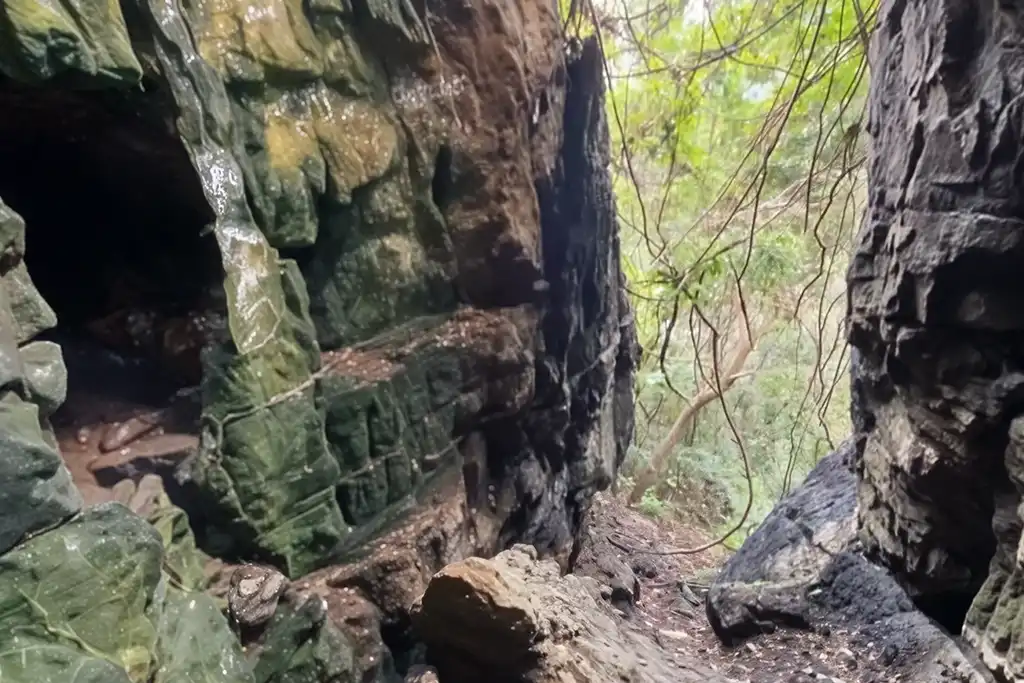







Kavala Caves, Dandeli: A Complete Guide to This Ancient Marvel
1. Deep Inside the Earth: What Makes Kavala Caves Special
Tucked away in the dense forests of Dandeli, Karnataka, the Kavala Caves are not just ancient limestone formations — they’re a walk through geological time and local legend. These caves were formed by volcanic activity and later shaped by water and wind, leaving behind stunning stalactites and stalagmites.
The biggest draw inside? A naturally formed Shiva Lingam, nestled deep within the cave’s womb. Pilgrims, nature lovers, and trekkers come here for different reasons — but all leave with the same awe.
Inside, the smell of damp earth mixes with the flutter of bats overhead. If you’re lucky (or brave), you might also spot harmless cave snakes curled in the corners.
2. What It Takes to Get There
Getting to Kavala Caves is part of the adventure. From Dandeli town, it’s about a 25-km drive. You can take a private car or hire a jeep through the Forest Department. Remember: you need a permit — available from the Phansoli Village Range Office — to enter the area.
Once you’re there, the real journey begins. 375 steps lead down into the belly of the forest, followed by narrow passages that require actual crawling. It’s not for the claustrophobic — or the faint-hearted.
3. Planning Your Visit: What You Need to Know
Best Time to Visit: October to February, when the weather is pleasant and the caves are safer to explore.
Timings: Typically open from 6:00 AM to 6:00 PM (confirm locally before visiting).
Entry & Charges:
Entry Fee: ₹20–₹30 (approx.)
Trekking/Guide: ₹500–₹800 per group (if hiring)
Trek Difficulty: Moderate to tough. Some sections involve low visibility and tight crawling.
What to Carry:
Torch or headlamp (a must — it gets pitch dark inside)
A bottle of water
Comfortable clothes you don’t mind getting dusty
Shoes with good grip
4. Before You Go: Quick Visitor Tips
Avoid sandals — wear sturdy footwear with grip.
Stay hydrated, but don’t overpack — it’s a trek, not a picnic.
If you’re unsure about directions or want to learn more about the caves, hire a local guide.
Respect the silence, the wildlife, and the religious significance of the Shiva Lingam.
Don’t leave trash behind. You’re in a forest zone.
Why Visit Kavala Caves?
This isn’t your average sightseeing spot. Kavala Caves are raw, real, and untouched. No polished tourist boards or paved paths here — just ancient rock, forest sounds, and the quiet hum of time itself. If you’re someone who craves more than a selfie spot — who wants an experience that feels primal and poetic — this is it.
Things to Do Around Kavala Caves
You’re already deep in Dandeli — don’t stop here.
White Water Rafting on the Kali River
Wildlife Safari in the Dandeli-Anshi Tiger Reserve
Visit Syntheri Rocks — another natural marvel
Chill at Moulangi Falls or Supa Dam Viewpoint
Suggested Itinerary (Sample)
1-Day Itinerary
Morning: Drive to Kavala Caves + Trek
Afternoon: Lunch + Visit Syntheri Rocks
Evening: Sunset at Supa Dam or relax by the Kali River
2-Day Itinerary
Day 1: Kavala Caves + Safari
Day 2: White Water Rafting + Moulangi Eco Park + Return
Where to Stay
Dandeli has stay options for every type of traveler:
Resorts by the river with adventure packages
Homestays that offer local food and forest views
Camping sites for stargazers and night owls
Need help planning your Dandeli trip?
We’ll Guide you — Stay, Activities, Everything Made Simple.
FAQs About Syntheri Rocks
Kavala Caves are ancient limestone caves located in the dense forests of Dandeli, Karnataka, India. They are famous for their unique geological formations, the naturally formed Shiva Lingam inside, and the adventurous trek required to reach them.
To reach Kavala Caves, you typically drive about 25 km from Dandeli town. You need to obtain a permit from the Phansoli Village Range Office. After a certain point, vehicles are not allowed, and you embark on a trek involving descending about 375 steps and crawling through narrow passages inside the cave.
The typical operating hours for Kavala Caves are from 6:00 AM to 6:00 PM. However, it’s always advisable to confirm locally with the Forest Department or tour operators before your visit, as timings can sometimes vary. Note that some sources mention daily trips by the Forest Department at 6 AM.
- The entry fee for Kavala Caves can vary. Based on current information, it’s approximately ₹20-₹30. There might be additional charges for trekking or hiring a guide (e.g., ₹500-₹800 per group for a guide). Some sources also mention trekking charges around ₹50-₹100 per person.
The Kavala Caves trek is considered moderate to tough. It involves descending approximately 375 uneven steps and then navigating very narrow, dark passages inside the cave where you must crawl for a significant distance. It is not recommended for individuals with claustrophobia, mobility issues, or weak physical fitness.
The primary attraction inside Kavala Caves is a naturally formed Shiva Lingam, which is revered by devotees. This unique geological formation is a major draw for pilgrims and a marvel of nature. Water is believed to trickle from an “udder-shaped” stone above the Lingam.
The best time to visit Kavala Caves is from October to February. During these months, the weather is cooler and more pleasant, making the trek less exhausting and the paths safer (as monsoon season can make them slippery and potentially dangerous inside).
Kavala Caves are ancient limestone caves believed to have been formed millions of years ago through volcanic activity and subsequent natural erosion by water and wind. They are considered to have existed since prehistoric times
- When visiting Kavala Caves, you should carry a torch or headlamp (essential as it’s pitch dark inside), a water bottle, and wear sturdy shoes with good grip. Comfortable clothes that you don’t mind getting dusty or dirty are also recommended.
